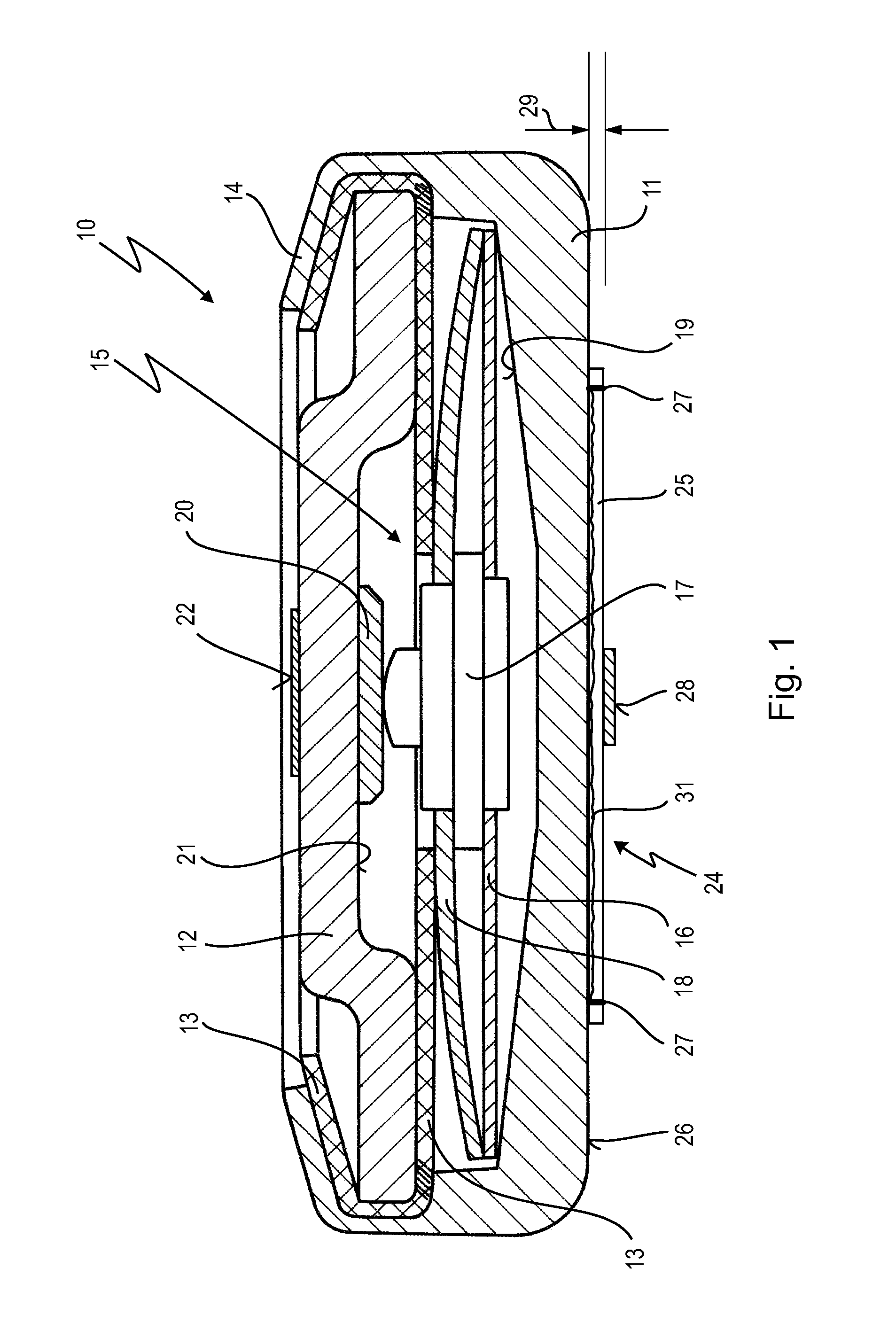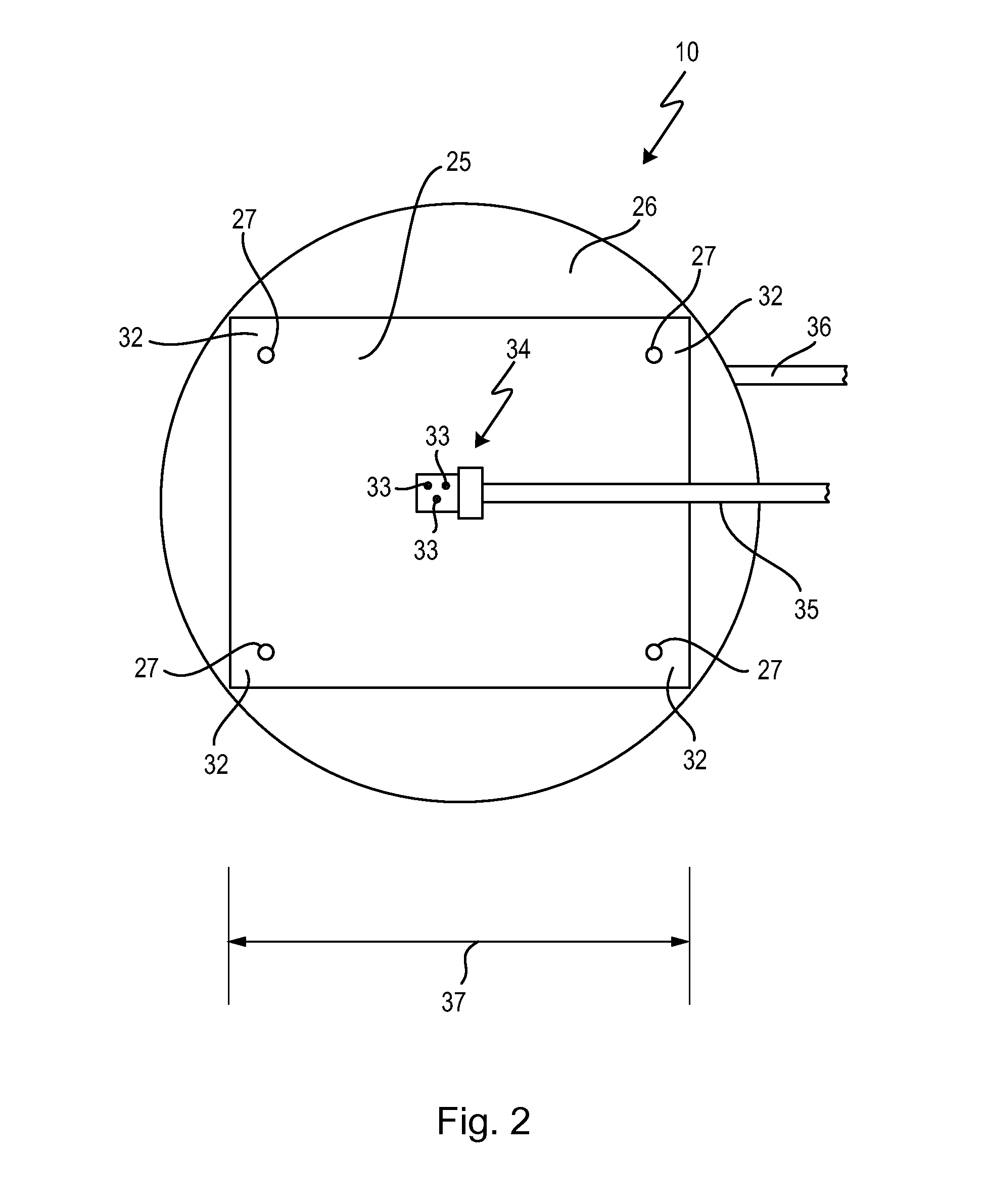Temperature-dependent switch
a technology of temperature-dependent switch and switch body, which is applied in the direction of electric switch, electrical apparatus, contact, etc., can solve the problems of insufficient mechanical stability, deformation of bimetallic snap-action disc, and inability to always be desirable, and achieves good thermal coupling of heating resistor, simple and inexpensive design, and good mechanical hold
- Summary
- Abstract
- Description
- Claims
- Application Information
AI Technical Summary
Benefits of technology
Problems solved by technology
Method used
Image
Examples
Embodiment Construction
[0076]In FIG. 1, 10 denotes a temperature-dependent switch which comprises a pot-like lower part 11, which is closed by an upper part 12, which is held on the lower part 11—with an insulation film 13 interposed—by a flanged rim 14.
[0077]A temperature-dependent switching mechanism 15 which comprises a spring snap-action disc 16, which centrally supports a movable contact part 17 on which a freely inserted bimetallic disc 18 rests, is arranged in the housing of the switch 10, which housing is formed by the lower part 11 and the upper part 12.
[0078]The spring snap-action disc 16 is supported on an inner bottom 19 on the inside on the lower part 11, which is manufactured from electrically conductive material.
[0079]The movable contact part 17 is in bearing contact with a stationary contact part 20, which is provided on an inner side 21 of the upper part 12, which in this embodiment is likewise manufactured from metal, although it is sufficient for the embodiment of the invention if the h...
PUM
 Login to View More
Login to View More Abstract
Description
Claims
Application Information
 Login to View More
Login to View More - R&D
- Intellectual Property
- Life Sciences
- Materials
- Tech Scout
- Unparalleled Data Quality
- Higher Quality Content
- 60% Fewer Hallucinations
Browse by: Latest US Patents, China's latest patents, Technical Efficacy Thesaurus, Application Domain, Technology Topic, Popular Technical Reports.
© 2025 PatSnap. All rights reserved.Legal|Privacy policy|Modern Slavery Act Transparency Statement|Sitemap|About US| Contact US: help@patsnap.com



